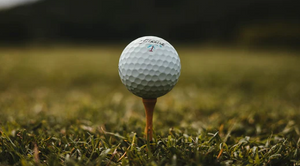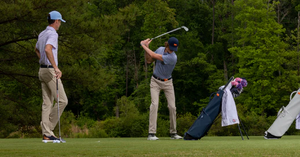How Do Golf Rangefinders Work?
Most golf courses have a series of distance markers set throughout the greens and fairways so that golfers know how far they are from the hole. Frustratingly, they generally stagger to 50 yards – 200, 150, 100, and so on.
You don't have to be a PGA pro to desire more specificity than this. Rangefinders are what golfers turn to to get specifics on their next stroke down to the inch.
There are three varieties of rangefinders out there: laser, GPS, and optical rangefinders. As you might expect, each has its advantages and disadvantages, and we're going to get into the nitty-gritty of each one.
Rangefinder Technology
In the most general sense, rangefinders utilize technology to measure the distance between you and objects on the course. Knowing these distances, you can better pick what kind of club you’ll use and whether you’ll hit a full shot, three-quarter shot, and so on.
Laser Rangefinders
Laser rangefinders use a visible laser beam to measure distance. Place the laser rangefinder on the ground and point it toward the object you want the distance from to find the range. The laser beam projects out and will bounce back on the reflective material that the golf course has placed on possible targets.
These types of rangefinders have become so popular they're practically commonplace. It's become a common practice for course managers to outfit pins and other targets with this reflective material.
These rangefinders are more accurate than GPS rangefinders, with an accuracy of up to 1/10 of a yard.
GPS Rangefinders
Most golf courses have submitted topographical charts of their layout so that golfers can use GPS rangefinders on them. You wouldn't be able to measure the distance between objects on a golf course by something like Google Maps, which usually renders golf courses as green spaces with no distinguishing features.
But using a GPS rangefinder, you can tap into a network of satellites to triangulate the distance between your position and any target on the course where you're playing. Some GPS rangefinders come pre-loaded with thousands of course maps, whereas others you'll need to download ahead of time from the course website before teeing off.
One advantage to this type of rangefinder is that it will auto-load distances from targets on each hole in the course. It doesn't require you to level and aim the device correctly, so in a way, it's more trustworthy.
Not all courses have GPS-accessible course maps. Still, if even the oldest golf course in America, the Dorset Field Club in Vermont, is GPS accessible, chances are you'll find your local course.
Optical Rangefinders
If you don't want to rely on battery power or GPS and don't trust yourself to operate a laser rangefinder (understandable), an optical rangefinder is your best bet.
Optical rangefinders are the oldest type of rangefinder, and they're analog. They look like a pair of binoculars split in half, consisting of a small tube with an eyepiece on one end and two lenses on the other. The scientific explanation involves parallax, which converts height into distance when the images created by the two lenses fuse into one.
Practically, it's a not exactly precise but super trustworthy instrument that will fit in your golf bag without taking up too much room. It’s worth bringing around even if you prefer a GPS or laser rangefinder, but bring one of those too.
Where Do You Aim a Golf Rangefinder?
You can start by aiming your rangefinder at the ground. Activate the device and measure the distance between yourself and the ground in front of you—something you can easily estimate. You can use this to verify that the rangefinder is delivering accurate results.
Once you've given it a little test, aim it in the general direction of the pin, flag, or target you've got your sights set on. Make sure to keep your hand steady and use the same eye each time you peer through the viewfinder if you're using a laser or optical rangefinder.
If you're using a GPS rangefinder, there's not much you need to do outside of clicking on the target you want to measure.
How Do You Read a Golf Rangefinder?
Each rangefinder will read differently, though none will be terribly complicated.
GPS rangefinders are the easiest to read. The distance displays on the screen. Some GPS rangefinders will have you input the degree of slope, which can vary the results. It can also be hard information to come by on the course. But you can always ask a representative of the course for that information.
Laser rangefinders are a bit trickier. After you choose the correct mode, adjust to your current conditions and look through the viewfinder. Capture the target in your sights, ensure you have a stable grip on the rangefinder, and press the button. The screen will tell you the distance reading.
The distance will appear in the viewfinder for optical rangefinders as you turn the knob. These can be inaccurate, so you may want to do a few readings.
Are Golf Rangefinders Accurate?
The laser rangefinder is the most accurate type, but it is also susceptible to human error in a way that GPS rangefinders are not. Optical rangefinders are by far the least accurate.
Do Pros Use Golf Rangefinders?
For a long time, rangefinders weren't even allowed by PGA and other professional associations. As of last year, PGA allowed rangefinders, but not every professional uses them. If they do, many stick with the old-school optical style.
Final Thoughts
Whether you go laser, GPS, or optical, using a rangefinder can only improve your game.



